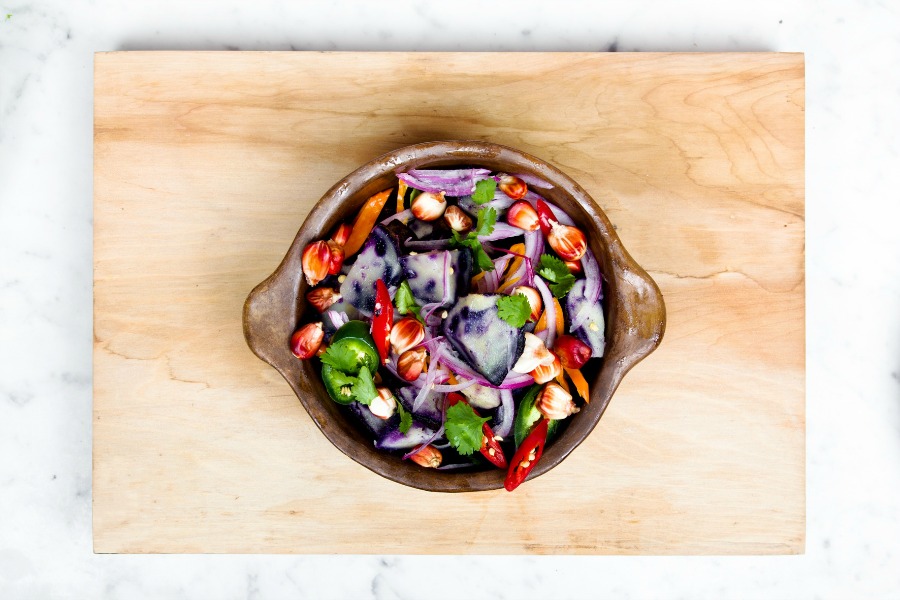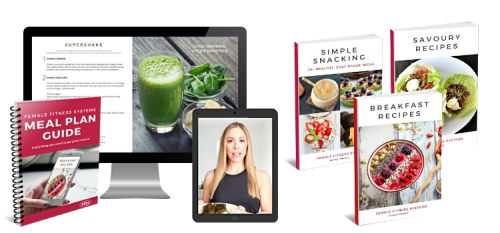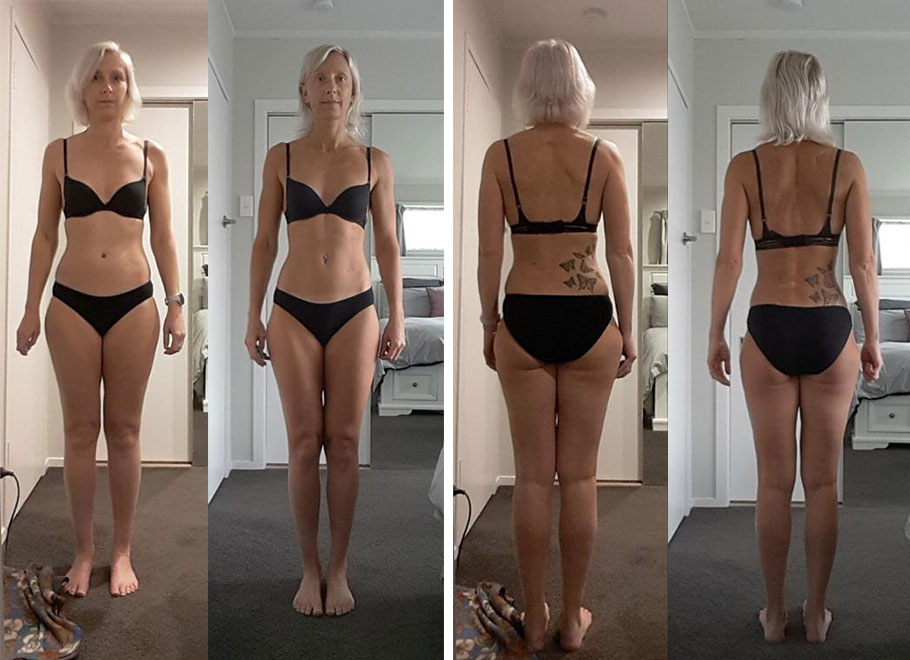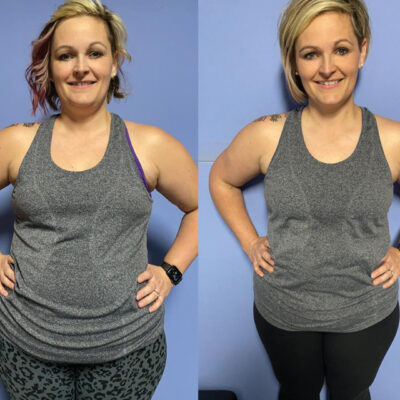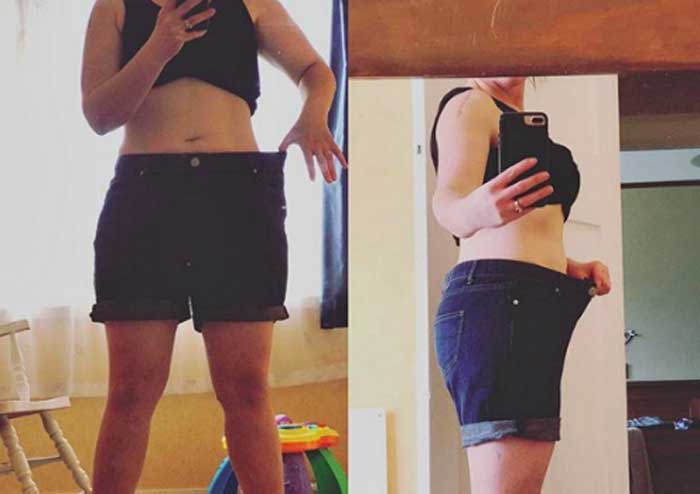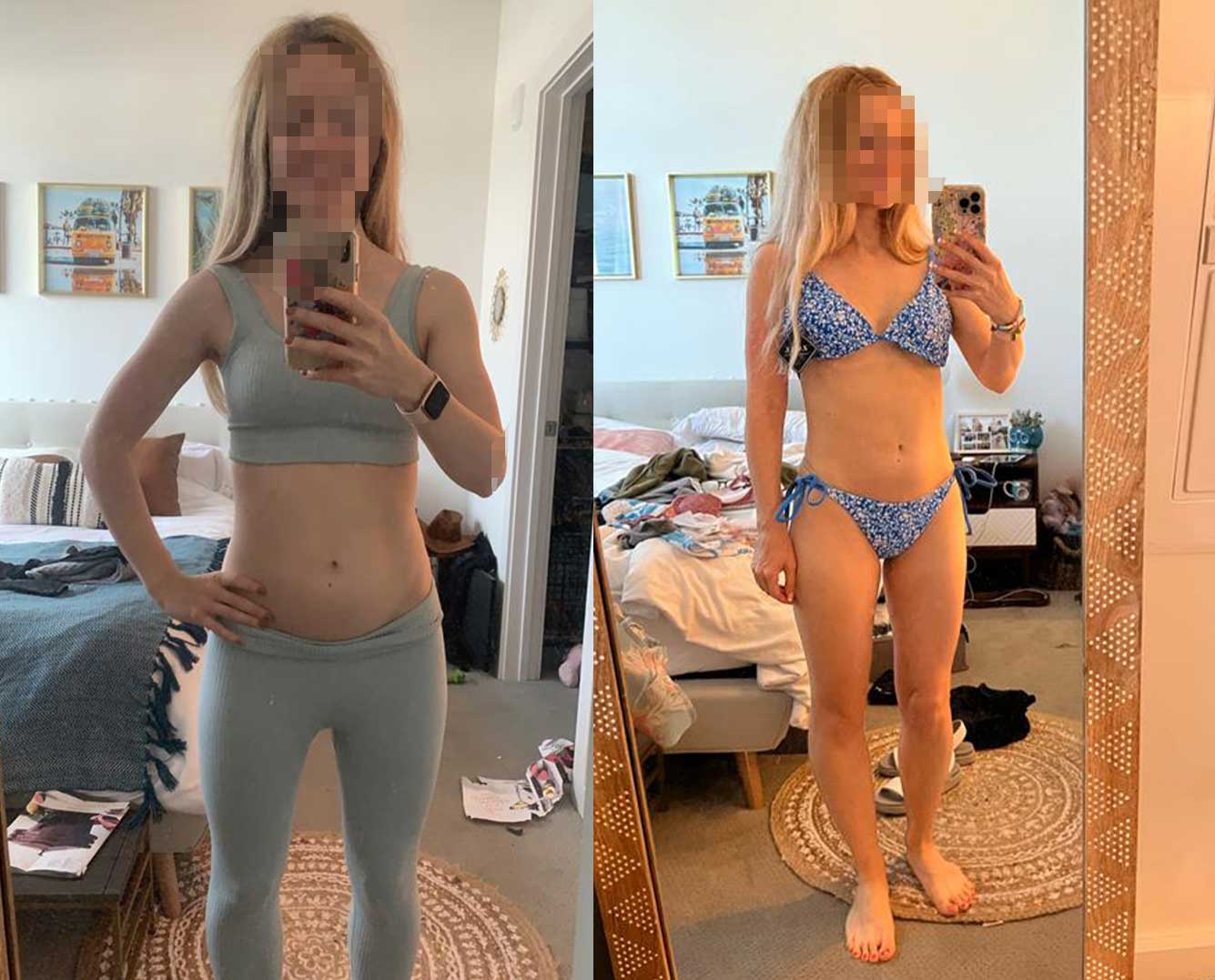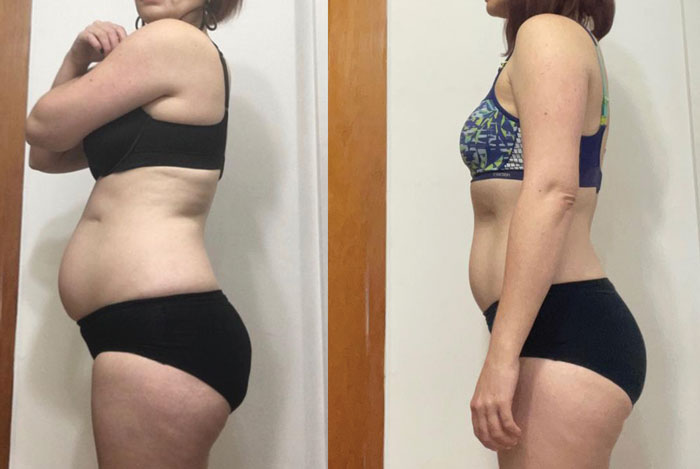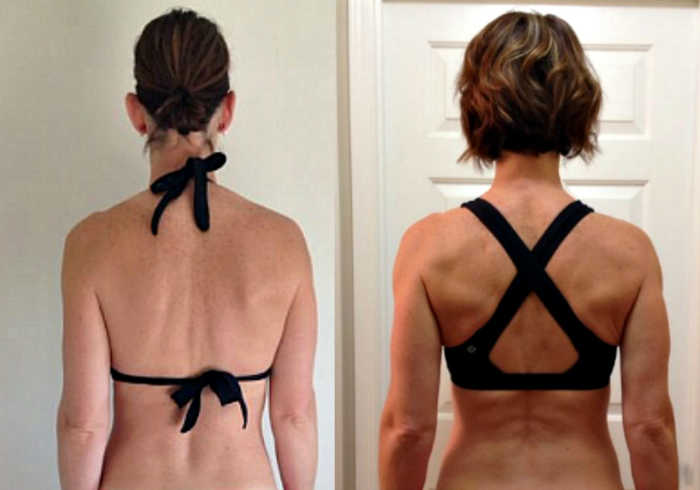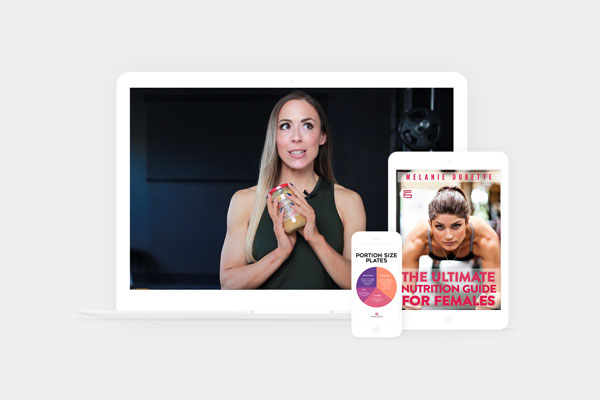What Causes Period Pain
A very simple explanation of what causes period pain would be:
↑ Inflammation = ↑ Period pain
You may have accepted period pain as a natural part of your life but there’s actually a lot you can do about it. Changing your diet is one of the most powerful things you can do for cramps because that’s the best way to reduce the inflammation that causes period pain.
I had terrible cramps from my very first periods as a teenager. The kind of cramps that bring you to tears and leave you curled up in bed for days. A couple years ago I figured out how to knock them out almost completely by changing how I eat.
Just to give you an idea of the impact this has had on my life. I used to need 1-2 ibuprofen at least every 4 hours and I would often still end up with cramps. Now I can take 1 ibuprofen every 8 hours on my heavier days and get around pain free. Sometimes I can even stretch it to 10 hours (which I do sometimes if I let myself sleep in). In my 40s my periods are getting heavier and becoming a real hassle – and usually heavier periods would mean more cramps. But even with the heavier periods, the cramping is pretty well under control.
To understand what causes cramps and how to get rid of them, you need to know about prostaglandins and how they are produced. Prostaglandins are chemical messengers similar to hormones that are naturally produced by your body using fatty acids (one of the main ones being arachidonic acid found primarily in animal products). Prostaglandins are found in almost every tissue in your body and not all of them are problematic but certain types of them are pro-inflammatory and cause your period pain.
Researchers have found that women with more period pain have higher levels of prostaglandins.
If you want less period pain, you need to reduce your body’s production of the problematic prostaglandins, and the best natural way to do that is through diet.
How To Get Rid Of Period Pain
1. Eat a plant-based diet
I want you to understand how powerful diet can be for your period pain. Changing your diet will help reduce your pain so much!
As we learned in the first section, women with period pain tend to have higher levels of prostaglandins. Now, I’m really simplifying things here because not all prostaglandins are bad, but some of them are pro-inflammatory. These are the ones that cause you to have period pain, and the good news is that you can influence them by what you eat.
Here’s how this works:
↑ Arachidonic acid (dietary fatty acid) = ↑ Pro-inflammatory prostaglandins = ↑ Period pain
Arachidonic acid, an omega-6 fatty acid largely found in meat, leads to the production of these pain-producing prostaglandins. So if you want to reduce these prostaglandins, you need to consume less arachidonic acid. The main sources of arachidonic acid in your diet are meat, egg yolks, dairy (including yoghurt and cheese) and some fish (ie. tilapia).
I initially started managing my period pain by cutting out meat, egg yolks and most dairy (except for a bit in my coffee) in the 7 to 10 days before my period, and I got good results. These days I eat a plant-based diet all year round. Plant-based means mostly plants – lots of vegetables, fruit, legumes and some grains, with very minimal animal products. I eat fish (usually salmon) on average two times per week and I take fish oil to keep my omega 3 levels up which helps with inflammation. I still eat some meat but on average only about 4 to 5 times a month. I also have a small amount of milk in my coffee (ie. 20 ml) every day (except during my period).
I realize that not everyone will be up for a major diet overhaul but if you are having bad periods it’s a sign that you need to make some changes. If you want to give this a try, I recommend adopting a plant-based diet a week before your period and definitely during your period. This will help reduce your pain so much!
Like everything fitness and nutrition related, you’ll get out what you put in. The more you follow an anti-inflammatory style of eating, the better you’ll feel during your period.
If your diet sucks, your period will suck. Period.
Did you know I’ve created a Meal Plan that includes Period Friendly Recipes, my Period Protocol and a Mini-Class on period pain?
Learn more about my Meal Plan here.
2. Lighten your period
This is for the gals with a heavy period. It may surprise you to know that there are things you can do naturally to reduce your flow. Reducing your flow will help period pain.
Reduce your flow, and you’ll reduce your pain.
The more your uterine lining builds up before your period, the more you’re going to have to expel and the heavier period you’ll have. Also, the more prostaglandins that will be released during your period.
Your uterine lining needs to be a certain thickness for fertility. But sometimes it gets too thick (usually due to a hormone imbalance where estrogen is too high and progesterone is too low). One of the ways the birth control pill works is by reducing this lining (which prevents implantation but also leads to lighter, less painful periods). But you can reduce your lining thickness naturally too.
Many of the recommendations below will help reduce the amount of estrogen in your body that’s available to work on your uterine lining, which will in turn help you lighten your period.
Here are some of the natural things that will help:
- Eat an anti-inflammatory plant-based diet.
- Increase your fiber intake (at least 34g of fiber per day for optimal hormone balance).
- Eat more vegetarian food (women who follow vegetarian diets have been found to have lower levels of estrogen).
- Eat a lower fat diet (low fat diets have also been associated with lower levels of estrogen).
- Lose weight if needed.
- Manage stress (because stress depletes your progesterone). Easier said than done – I know. But try your best.
- Eat phytoestrogens like flax seeds and soy which may help reduce the impact of your body’s own estrogen (and therefore reduce your lining).
- Consume lots of cruciferous vegetables (for estrogen elimination).
- Use ibuprofen (which can actually help lessen the flow).
- Make sure your iron levels are adequate.
One of the causes of heavy periods is low iron. It’s a problematic cycle because the heavier your periods, the more iron you lose. And the lower your iron gets, the heavier your periods get. If your iron is really low it could take a few months to notice a difference. Get your iron levels check and be diligent with supplementation if needed. If prescription iron hurts your stomach, try a gentler form such as iron bisglycinate.
3. Use anti-inflammatories and supplements
Most women skip right to this step, but really bad cramps and heavy periods are signs that your body is out of balance and inflamed. It’s important to make the dietary and lifestyle changes necessary to reduce inflammation because your overall health and longevity are at stake. Inflammation is linked to almost every problem and disease associated with aging.
However, even if you’ve changed your diet, you may still need anti-inflammatories like ibuprofen (although it’s likely you will need less than before). Using anti-inflammatories will help with pain and reducing flow. Ibuprofen works by inhibiting the production of those painful prostaglandins.
You can also take supplements that help reduce inflammation including curcumin, ginger and fish oil Studies have shown that supplementing with ginger can reduce period pain and significantly decrease heavy flow. The effective dosage seems to be 750mg to 1g of ginger split into 3 to 4 doses over the first three days of your period, and possibly the day before.
Some studies also suggest that magnesium, zinc, vitamin D, and B vitamins will help reduce period pain. Magnesium and zinc in particular are both anti-inflammatory and may prevent the formation of the prostaglandins that cause period pain.
4. Exercise regularly but not necessarily during your period
For many women, exercising is the last thing they want to do on their heavier period days. Especially if you are someone who has a heavy period, cancelling all obligations and staying in bed is the only thing that you’ll feel like doing. So why is exercise always recommended for period pain?
Usually, the reason for recommending exercise is that it stimulates the release of beta endorphins which can act as an analgesic for non-specific pain. However, the research on whether exercise actually helps reduce period pain isn’t definitive.
Since being overweight is associated with more inflammation and period pain, what’s more definite is that you should exercise throughout the month and maintain a healthy weight. Your period, however, isn’t the time to be pushing yourself.
I love the Ayurvedic approach which recommends acting in accordance with how you feel. If period pain makes you want to stay in bed, then you should rest. I view my period as my “earned downtime.” If you are a hard charging person, having a couple days off a month will be well deserved and good for you.
Your Plan For Period Pain
Your period is, in a sense, a report card for your health. Cramps are a sign that your body is out of balance.
One of the biggest takeaways from this article is that if your diet sucks, your period will suck. But I’m willing to bet that it’s not just your period that sucks. You probably also have other period-related symptoms or health problems. So many of the complaints you have – PMS, headaches, body aches, joint pain, digestion issues – are related to how you eat.
I’ve listed a lot of things you can change in this article and you might feel overwhelmed but I promise it’s not complicated. It will take some experimentation and planning to start but it’s worth it in the long run. As a bonus, eating less meat is a fantastic way to save money. Here’s how to get started:
1. Eat a plant-based diet for the 7 days in the lead up to your period, and during your period.
Avoid:
- Meat
- Eggs
- Dairy (including cheese and yoghurt)
- Junk food and fast food
- Sugary snacks (ie. baking, cookies, chocolate bars)
Eat more:
- Vegetables
- Fruit
- Wholegrains
- Legumes
- Vegetarian/vegan protein powders
- Tofu
- Nut Milks
- Clean fast foods (ie. sushi, salad bars)
2. Make sure you get enough fiber (34g/day).
3. Check your iron levels if you have a heavy period. Supplement if needed.
4. Use anti-inflammatories during your worst days. Use anti-inflammatory supplements like curcumin and fish oil all month, and ginger before and during your period.
If you don’t take the time to care for yourself during the month and eat well, you’ll have to take time out during your period. When you have cramps, you are forced to slow down.
Your body sends you signals constantly and if you ignore them and don’t take time for self care, your body is going to scream at you in the form of cramps. If you’re lucky, cramps will be the least of your problems. More likely though, especially as you get older, you’ll start having even more problems like terrible PMS, mood swings, headaches, joint pain and digestion problems. You may have to start worrying about diseases associated with inflammation like arthritis, diabetes and even cancer.
This isn’t just about taking care of yourself so you don’t get cramps. This is about looking after the only body you have and using your periods as an opportunity to see how well you are doing.
Want some help with all this? I’ve created a Meal Plan that walks you through everything you need to do for better periods. It includes Period Friendly Recipes, my Period Protocol and a video Mini-Class on preventing period pain with diet.
Related Articles
Why You Have Fat Days And What To Do About Them
Why You Should Eat More Plants (Including A Sample Meal Plan)


